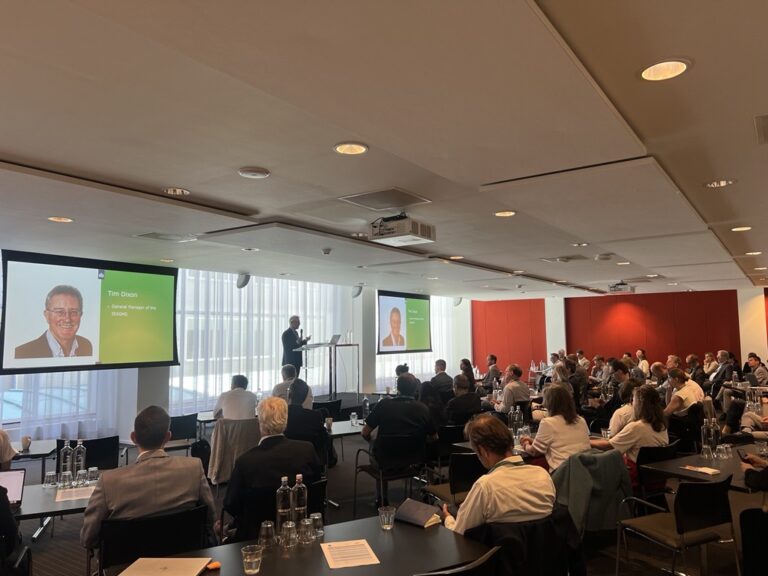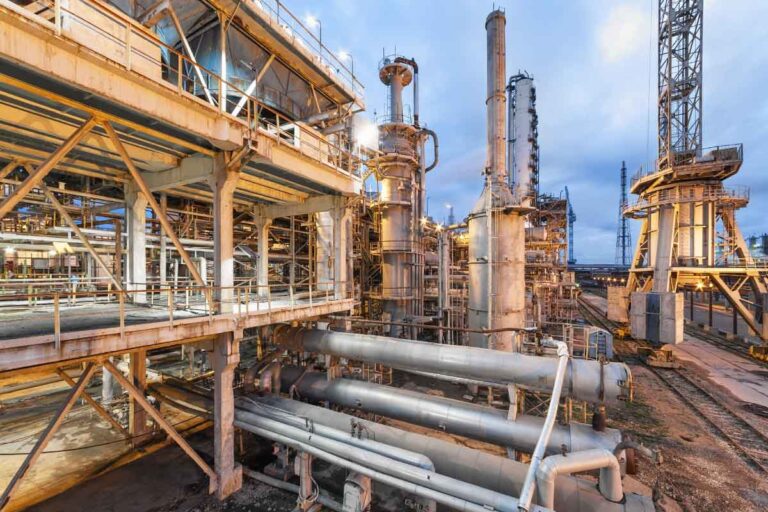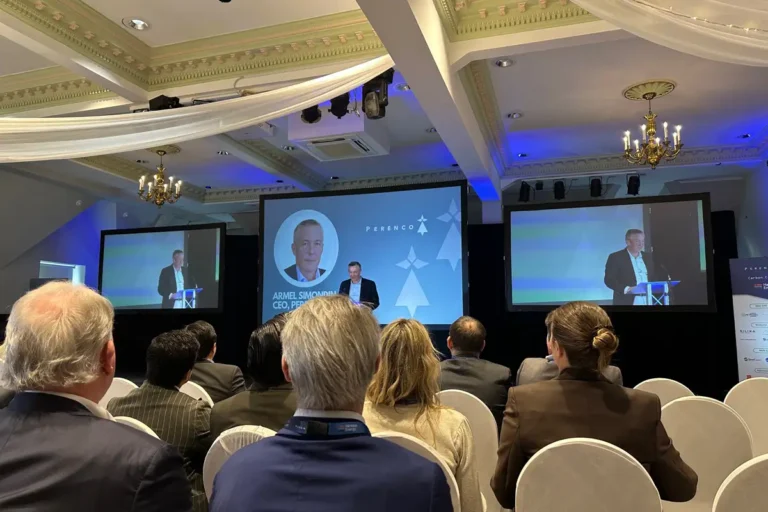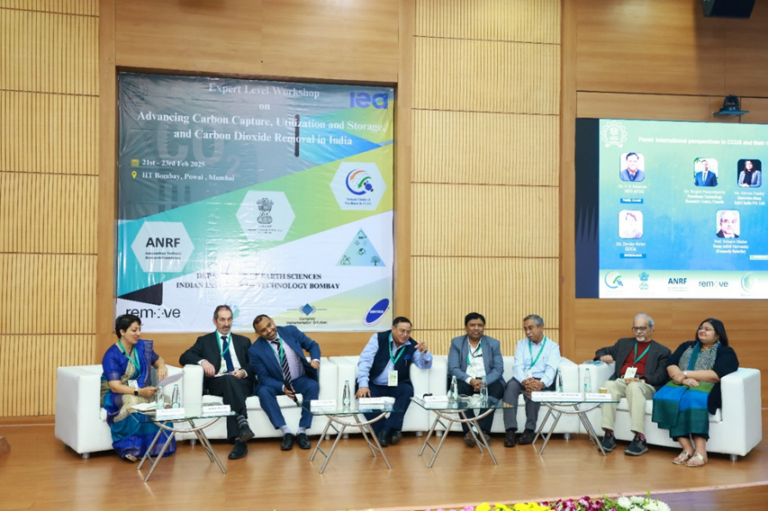
Asian Development Bank (ADB) Workshop on De-Carbonization of Cement Sector through CCUS
19 October 2021

A virtual workshop on the De-Carbonization of the Cement Sector through Carbon Capture, Utilization and Storage (CCUS) was hosted by the Asian Development Bank (ADB) on the 14th October 2021. The primary objective of the workshop was to present the findings of the prefeasibility study of the cement production CCUS project in India. Further, the workshop was aimed at understanding the views of the experts from the cement industry regarding the outlook of CCUS and defining the role of multilateral development banks in decarbonising the industry. The expected output of the workshop was for attendees to capitalise on learnings from the meeting towards promoting CCUS and low-carbon cement production in India and other developing member countries (DMCs) of the ADB.
Cement is an indispensable part of the global economy. In fact, it is the most consumed product globally after potable water and its production is a major source of global CO2 emissions (generating about a quarter of all industry CO2 emissions) and also produces the most emissions per revenue dollar as represented in Figure 1.
The global production of cement reached 4.2 Gt in 2019. The market is expected to grow in the coming decades reaching up to 12–23% by 2050, as a result of the increasing global population and urbanization trends, coupled with infrastructure development needs.
 Figure 1. Global CO₂ emissions from cement production and emissions per revenue
Figure 1. Global CO₂ emissions from cement production and emissions per revenue
On the backdrop of the emission intensity of the cement industry and value CCS will play in decarbonising the industry, ADB established the Carbon Capture and Storage (CCS) Fund jointly with Australia as a single-partner trust fund under the auspices of the Clean Energy Financing Partnership Facility in July of 2009 and which later became a multi-partner trust fund when the United Kingdom joined in December of 2021.
Darshak Mehta, a Senior Carbon Capture and Utilisation Specialist with the ADB opened the workshop. He introduced the Chief of Energy Sector Group of the ADB, Priyantha Wijayatunga; who delivered the welcome address. He reaffirmed ADB’s commitment to the Paris Agreement and reiterated CCUS as an important technology to decarbonize the economy especially in the hard-to-decarbonise industrial sectors. Priyantha also acknowledged the partnership with the Global Cement and Concrete Association (GCCA). GCCA and the World Economic Forum (WEF) jointly launched the Concrete Action for Climate (CAC) initiative (representing 40% of the global concrete and cement industry). This collaborative platform is aimed at advancing the industry’s commitment to carbon neutral concrete by 2050 as part of the Mission Possible Partnership.
Mahendra Singhi; MD and CEO of Dalmia Cement Bharat Limited (DCBL) started off by thanking the ADB and the UK government for organising the workshop and reasserted his company’s commitment to capturing carbon emissions from cement production, targeting net zero by 2040. Mahendra called for improved financing protocols to enable businesses in developing countries to access and appropriately utilise the grant fund in line with climate goals. DCBL is scheduled to start its CCUS project in 2023/2024 with the support of ADB and other partners. This initiative amongst the 28 operational and a new wave of 60+ commercial CCUS projects (that are in advanced development) across the world is expected to significantly increase the amount of captured CO2, which currently stands at about 40 Mt each year. CCUS deployment must reach 5.6 Gt of CO2 to reach climate goals, accounting for a fifth of the emissions reduction needed by 2050.
Tony Zhang, CO2 Utilization Specialist, stated that he was honoured to support ADB in its prefeasibility study on CCUS in India and Devika Wattal, Innovation Consultant at GCCA presented some techno-economic findings, the main body of which are currently private and confidential. She further presented a schematic of the Ariyalur plant process (including the process parameters and emission profile) which is planned to be integrated with the designed 0.5Mtpa amine-based capture plant (located on a 100m2 plot within close proximity to the Dalmia Ariyalur Cement Mill). She further recognised that close collaboration between the government, industry and finance community was critical to successful deployment. An example of such collaboration manifested into the launch of the Indian Cement Sector Sustainable Development Goals (SDG) Roadmap, where major companies from the cement sector and the World Business Council for Sustainable Development (WBSDC) aim to take actions tomaximise its SDG impact.
A CO2 utilization specialist, Ramesh Bhujade; reported on the extensive overview study carried out on the CO2 utilization technologies landscape. Globally, approximately 230 Mt of CO2 are utilised per year, from which fertiliser production and Enhanced Oil Recovery (EOR) accounts for about 130 Mt and 80 Mt, respectively. New pathways to utilise CO2 in the production of chemical, fuels and aggregates in building materials is gaining global momentum and offers an opportunity for CO2 utilization in the circular carbon economy. Detailed multi-criteria analysis (MCA) has been carried out by ADB consultants on six CO2 derived products namely urea, soda ash, mineralization, methanol, algae for feed and algae for oil. The multistep method has been used to evaluate promising pathways before arriving at the final product of choice. DCBL provided the MCA parameters and weightages as shown in table 1.
 Table 1.MCA Individual score for CO₂ utilization projects
Table 1.MCA Individual score for CO₂ utilization projects
It is worth noting here that the weightage suggested by DCBL to TRL is highest at 40%, followed by economic parameters at 30 %, thus totalling 70% weightage towards the overall score. The results of the analysis carried out on the aforementioned six products is provided in table 2.
 Table 2.MCA analysis for the six CO₂ derived products*Overall value Includes the score for all 8 parameters listed earlier
Table 2.MCA analysis for the six CO₂ derived products*Overall value Includes the score for all 8 parameters listed earlier
Taking into account the results from table 2, urea and soda ash are top-ranking options for short term implementation. Ramesh also presented the CO2 (captured from the Ariyalur plant) to urea cost sensitivity analysis where he reported that ammonia is the main cost determinant, contributing to about 70% towards the operating expenditure (OpEx) of urea production. A detailed financial analysis and Life Cycle Assessment (LCA) has been carried out by financial and environmental experts, respectively.
B. C. S Baliga, a finance analyst, provided a summary of the findings of the financial assessment. He reported that with urea selling at a price of $330/tonne and an electricity tariff of $0.04 per unit, the project yields a return on equity (ROE) of 20%. At a lower selling price of urea, viability gap funding will be required to achieve an ROE of 20%. Further, he stated that the impact of reduction in CapEx on the ROE is comparatively marginal and the rate of interest on debts does not have a significant impact on the ROE. Baliga also reported that the reduction in electricity tariff can significantly improve ROE. He concluded his presentation by revealing that the conceptual design for an amine-based solvent carbon capture plant was complete, with major equipment sizing and costing.
The last item on the agenda was the panel discussion chaired by Mayank Choudhary, Principal Investment Specialist, Private Sector Operations Department, ADB. Members of the panel include Ashwani Pahuja, Chief Sustainability Officer and Executive Director, Manufacturing at DCBL, Claude Lorea, Executive Director at the GCCA, Juho Lipponen, Co-ordinator of the Clean Energy Ministerial CCUS Initiative, Virendar Kumar Duggal, Principal Climate Change Specialist, Sustainable Development and Climate Change (SDCC) Department, ADB and Tongbo Sui, Vice President, Simona International, China National Building Material Group Co., Ltd. (CNBM). The panel discussion covered a broad spectrum of issues ranging from the contribution of renewables in decarbonisation of the cement industry, favourable regulatory provision, making CCUS an investable technology, stakeholders’ partnership and project scale-up to financing models that de-risks decarbonisation deployment. At the end of the panel discussion, the key take-away was that, without CCUS, decarbonisation of the cement industry, with the cement sector accounting for 8% of the global CO2 emissions, is inconceivable .
Darshak Mehta thanked participants for attending the meeting and closed the workshop.
Abdul’Aziz A. Aliyu
15th October 2021
Other articles you might be interested in
Get the latest CCS news and insights
Get essential news and updates from the CCS sector and the IEAGHG by email.
Can’t find what you are looking for?
Whatever you would like to know, our dedicated team of experts is here to help you. Just drop us an email and we will get back to you as soon as we can.
Contact Us NowOther articles you might be interested in
Get the latest CCS news and insights
Get essential news and updates from the CCS sector and the IEAGHG by email.
Can't find what you are looking for?
Whatever you would like to know, our dedicated team of experts is here to help you. Just drop us an email and we will get back to you as soon as we can.
Contact Us Now









